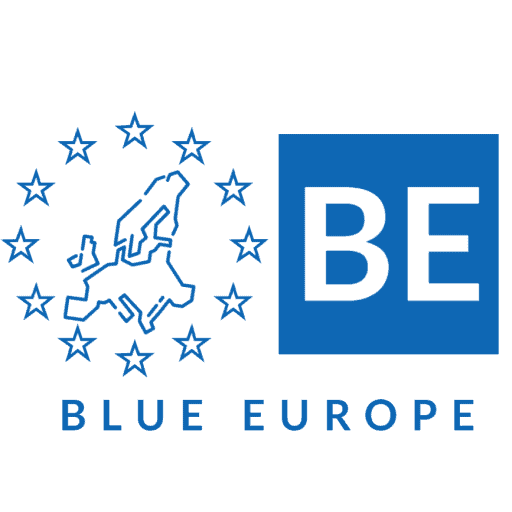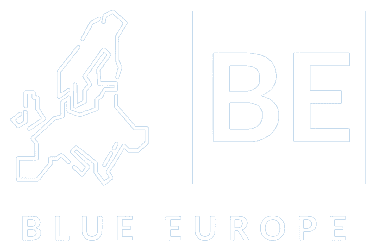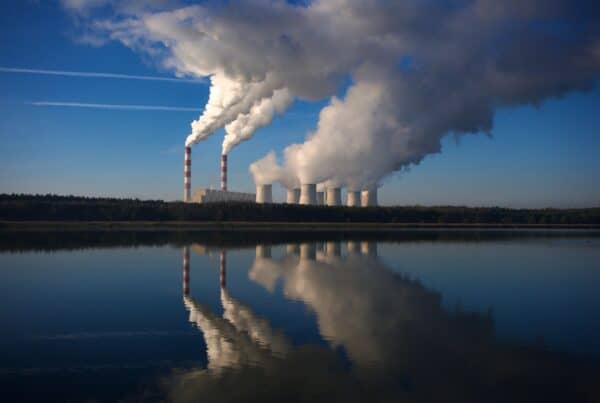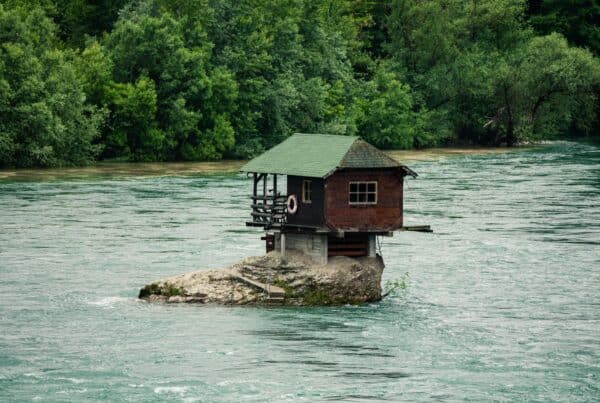Paper by Lorenzo Casullo[1] and Erlend Sundsdal Hansen.[2]
1. Introduction: Cleantech investment is slowed by high perceived risk
The erosion of Europe’s industrial base has become a key concern for businesses, workers and policy makers. The threat, described by Mario Draghi as “slow agony” in his 2024 report on European competitiveness,[3] has triggered decisive action by EU policymakers, with the adoption of the Clean Industrial Deal in February 2025.
The plan to reindustrialise and decarbonise Europe focuses on two key sectors: energy-intensive industries and cleantech. These sectors offer a competitive advantage for Europe, given the existing manufacturing base. For instance, the steel sector employs over 310,000 people in Europe and the EU hosts nine of the world’s top 15 electrolyser manufacturers.[4]
These sectors face common competitiveness challenges, such as access to green and affordable energy which raise costs for both energy-intensive industries such as steelmaking and increase production costs for cleantech manufacturers. Other risks specific to cleantech include demand volatility and access to finance, as well as Europe’s dependence on concentrated supply chains for critical raw materials.
In this article, we focus on the risk that imported minerals pose to the development of cleantech in Europe and to meeting the objectives of the Clean Industrial Deal.
2. Critical raw materials (CRMs) are key inputs in clean tech, yet carry considerable risks
The acceleration of the energy transition in Europe has driven a surge in demand for critical raw materials as inputs in clean technology. Looking at batteries, lithium is a key input in electric vehicles. According to the most conservative estimate by the IEA (Stated Policies scenario), global lithium demand for EVs is projected to grow sevenfold by 2035.[5]
Almost 60% of global lithium is processed in China, and its dominance of supply chains is expected to endure.[6] European Commission President Ursula von der Leyen recently highlighted that 97% of lithium used in the EU is imported from China,[7] reflecting a strong dependence on the global powerhouse for lithium-ion batteries. This reliance makes Europe vulnerable to geopolitical risks and supply chain disruptions resulting from shifts in export policies and heightened price volatility. Moreover, as European battery manufacturing expands, the demand for refined lithium will continue to grow, further increasing exposure to supply constraints.
Another example is the growing market for electrolysers, which is expected to drive future demand for several critical raw materials.[8] One of these is iridium, a platinum metal used in electrolysers to produce clean hydrogen. The European Commission forecasts iridium demand for electrolysers to increase by almost 50% in the EU and 250% globally by 2030.[9]
As a leader in the production of electrolysers, the EU faces significant risks in its iridium supply chain. A source of concern is the geographical concentration of supply, with South Africa accounting for 93% of global production of iridium.[10] Another challenge is persistent price volatility, raising concerns about limited market availability.[11] Recent low prices have forced South African platinum-group metals mining companies to cut costs.[12] A prolonged downturn could further aggravate the economic and financial outlook for these companies, threatening long-term supply. Hence, the combination of high geographical concentration and price volatility leaves Europe exposed to iridium shortages, creating potential bottlenecks in electrolyser technologies.
Wind energy technology also requires critical raw materials inputs, particularly Rare Earth Elements (REEs). At the EU level, REE demand for wind turbine magnets is projected to increase almost five-fold by 2030.[13] Facing growing demand for REEs, the EU is heavily reliant on China, who provides 100% of EU’s supply of heavy REEs and 85% of light REEs.[14] This extreme dependence exposes the EU to the impacts of potential export restrictions, disruptions to supply, and price volatility.
REE supply chain risks take different forms. China’s 2010-2011 REE export quota cuts caused a global shortage and price surge. Similar disruptions today could slow European wind turbine manufacturing as China has recently overtaken the EU as the leading global producer.[15] On the contrary, China’s low-price strategy has recently created a supply surplus, potentially reducing the competitiveness of European REE extraction.[16]
Table 1. Supply chain risk of cleantech products with associated CRMs and suppliers
| Cleantech product | Critical Raw Material | Supplier | Supply chain risk |
| EV batteries | Processed lithium | China | High |
| Electrolysers | Iridium | South Africa | Medium |
| Wind turbines | Rare Earth Elements | China | High |
These examples showcase how excessive dependence on China, high geographical concentration of supply chains, and geopolitical tensions expose Europe to supply chain risks. The impacts are further compounded by a lack of recycling technology and capacity at the European level. These factors threaten the security and sustainability of Europe’s CRM supply chains, and the competitiveness of its clean tech industries, with potential negative cascading effects on the progress of the clean energy and digital transitions, slowing down decarbonisation and innovation efforts.
3. Reducing criticality of CRM can mitigate cleantech investment risks
Solution 1: Substitution with technology alternatives
A key strategy to reduce CRM criticality is developing cleantech that require fewer CRM inputs. Substitution not only lessens reliance on CRMs whose demand is expected to rise rapidly with the energy transition, but also reduces physical, geopolitical, and reputational risks associated with geographically concentrated supply chains. By addressing CRM criticality in cleantech through substitution, this strategy can lead to a more stable supply of battery raw materials with fewer disruptions, offering greater certainty for investors
A practical example is offered by Spanish scale-up B5tec and its REDCAP technology. Their new battery for EVs and stationary storage, which eliminates the need for lithium and cobalt, instead using abundant, low-cost raw materials.[17] By removing the need for processed lithium, REDCAP circumvents reliance on a volatile supply chain dominated by China, reducing exposure to geopolitical risks and disruptions. Moreover, eliminating cobalt reduces dependence on supply from the DRC, which is linked to violent conflict, human rights abuses, and environmental damage. This contributes to minimize supply disruptions caused by political instability and mitigates reputational risks arising from environmental and social impacts of mining on local communities.
Solution 2: Supply diversification and vertical integration
Although substitution is an effective strategy, alternative materials are not always available or affordable in cleantech. When CRMs cannot be replaced, supply diversification and vertical integration are viable alternatives that help reduce criticality.
Diversifying CRM sources reduces dependence on a few suppliers, partially mitigating the risks and impacts of supply disruptions that could slow cleantech development. Eastern and Northern Europe could play a key role in implementing this strategy. Serbia is home to Europe’s largest lithium deposits,[18] while 21 out of 30 of EU’s most needed CRMs are found in Ukraine.[19] Moreover, Sweden, Finland, and Norway have recently identified REE deposits, which could become essential for diversifying Europe’s CRM supply for cleantech. Leveraging deposits and reserves across these regions can reduce reliance on China, minimise the impacts of price volatility and geopolitical risks, and lower vulnerability to export restrictions and other geoeconomic tools. Nonetheless, for diversification to be feasible, Europe must also accelerate the development of its own mining, refining, and processing capacities.[20]
There is also a rising trend among cleantech manufacturers to integrate upstream mining and midstream processing into their operations. GM recently invested $650 million in lithium extraction through a strategic partnership with Lithium Americas Corp, securing production rights to supply its EVs.[21] Similarly, Tesla has acquired mining rights for lithium and nickel to secure battery material supply, while Volkswagen has integrated battery production into its supply chain, enhancing control over its upstream supply. These strategies reduce CRM criticality by increasing supply chain control through securing direct access to materials, controlling battery production, and lowering reliance on external suppliers. As a result, they enhance stability of supply and reduce investor uncertainty associated with supply disruptions and geopolitical risk, making cleantech investments more attractive.
Solution 3: Circular economy
Circular economy solutions are key to improve the recovery of CRMs from end-of-life products, boosting CRM supply and reducing external dependence. The European Critical Raw Materials Act (CRMA) sets ambitious 2030 targets, including sourcing 25% of EU CRM consumption from recycling. The EU is currently a leading force in the global circular economy, with over 50% of some metals (iron, zinc, platinum) already recycled, covering more than 25% of EU’s consumption.[22]
Eastern Europe plays a key role in recycling efforts, with Poland leading the way in urban mining. Poland has experienced one of the highest increases in recycling rates[23] and is home to the EU’s first car battery recycling plant, located at Elemental’s platinum group metals recycling facility in Zawiercie.[24] This highlights the growing importance of expanding urban mining capacity to support the EU’s raw material independence. Furthermore, retaining waste and improving recycling capacity within Europe is crucial. If most cleantech waste continues to be exported for recycling, Europe will remain vulnerable to the same supply risks for secondary CRM as it faces for primary CRM sources.
Another innovative circular economy strategy involves labelling E-drive motors with information on the main REE inputs.[25] Improving component labelling facilitates removal processes that could improve CRM recovery in motors and magnets. This solution can help waste management operators more effectively extract CRMs used in motors and magnets by optimizing their recovery processes, thereby contributing to increased circularity of CRMs.
Circular economy solutions reduce CRM criticality by meeting part of the demand through recycling, decreasing reliance on external suppliers, and mitigating supply risks. Strengthening secondary CRM markets boosts resilience, while integrating recycled materials into cleantech further reduces dependence on foreign sources and diversifies supply, lowering vulnerabilities and promoting investment.
4. Policies for cleantech promotion by lowering CRM risk
European policy has recognised the link between instruments that de-risk CRM supply chains and the promotion of a cleantech industrial base for Europe. Under the previous College of Commissioners, the Net-Zero Industry Act (NZIA) and the CRMA were introduced as follow-up initiatives to the European Green Deal Industrial Plan. The NZIA is designed to enhance the production of clean technologies within the EU, while the CRMA aims to fortify domestic supply chains and bolster international agreements on critical materials.
Building on these, the Clean Industrial Deal published in February 2025 further strengthens the policy toolbox. European mining, processing and recycling activities will be boosted by the announced 47 new Strategic Projects located across 13 EU Member States, with 25 projects comprising extraction activities, 24 processing, 10 recycling and 2 substitutions of raw materials. The Strategic Projects cover 14 of the 17 strategic raw materials listed in the CRMA.[26]
In addition, the Commission will create a platform for demand aggregation and a matchmaking mechanism for strategic raw materials. A dedicated EU Critical Raw Material Centre to jointly purchase raw materials on behalf of interested companies and in cooperation with the Member States will be set up. Other tasks could relate to coordinating strategic stockpiles, supply chain monitoring, designing financial products to invest in upstream supply in the EU and third countries
In parallel, under the forthcoming Circular Economy Act, rules on sectors such as e-waste will be revised to ensure that they are simpler, fit-for-purpose and recover the critical raw materials they contain. The design of a potential new IPCEI on circular advanced materials for clean technologies could broaden the scope of current recyclability initiatives.
Taken together, the policy framework for de-risking CRM supply chains is likely to be more conducive to the strategies outlined in this article: circular economy, substitution and supply diversification. Much needs to be done to ensure that these instruments are implemented rapidly and effectively across Member States to secure a domestic supply of CRM that supports the growth of the cleantech sector in Europe.
References and Endnotes
- Lorenzo is Regional Director for Europe at Ricardo plc, based in Madrid. He oversees the advisory portfolio across eight European offices employing 450+ staff. Passionate about accelerating the transition to clean energy, mobility and industry, Lorenzo works closely with EU institutions and industry associations as a trusted expert delivering impactful solutions on high-profile assignments. An economist (Cambridge, City University) by training, he has worked as advisor and civil servant with the UN and the OECD, as well as a consultant to private investors in infrastructure. He publishes extensively and gives talks across Europe, representing Ricardo both in national and international forums. ↑
- Erlend is a consultant at Ricardo plc, where he coordinates work on critical raw materials. Based in Madrid, he works at the intersection of geopolitics, the energy transition, and climate change, collaborating with EU institutions and government stakeholders across Europe, Africa, and Latin America to develop strategies and policies. Holding a Master’s in Geopolitics and Strategic Studies, he previously produced geopolitical and economic reports for the Norwegian Ministry of Foreign Affairs while at the Norwegian Embassy in Madrid and also gained diplomatic experience at the Embassy of Ghana. ↑
- Draghi, M. (2024). The future of European competitiveness. https://commission.europa.eu/topics/eu-competitiveness/draghi-report_en#paragraph_47059 ↑
- Directorate-General for Internal Market, Industry, Entrepreneurship and SMEs (2025). A European Steel and Metals Action Plan. https://single-market-economy.ec.europa.eu/publications/european-steel-and-metals-action-plan_en ↑
- IEA (2024). Critical Minerals Data Explorer. https://www.iea.org/data-and-statistics/data-tools/critical-minerals-data-explorer ↑
- IEA (2024). Global Critical Minerals Outlook 2024. https://www.iea.org/reports/global-critical-minerals-outlook-2024 ↑
- European Commission (2024). Opening speech by President von der Leyen at the Clean Tech Industry Dialogue. https://ec.europa.eu/commission/presscorner/detail/ne/speech_24_977 ↑
- IEA (2024). Global Critical Minerals Outlook 2024. https://www.iea.org/reports/global-critical-minerals-outlook-2024 ↑
- JRC (2023). Supply chain analysis and material demand forecast in strategic technologies and sectors in the EU – A foresight study. https://publications.jrc.ec.europa.eu/repository/handle/JRC132889 ↑
- JRC (2023). Supply chain analysis and material demand forecast in strategic technologies and sectors in the EU – A foresight study. https://publications.jrc.ec.europa.eu/repository/handle/JRC132889 ↑
- IEA (2024). Global Critical Minerals Outlook 2024. https://www.iea.org/reports/global-critical-minerals-outlook-2024 ↑
- Ibid ↑
- JRC (2023). Supply chain analysis and material demand forecast in strategic technologies and sectors in the EU – A foresight study. https://publications.jrc.ec.europa.eu/repository/handle/JRC132889 ↑
- European Commission Raw Materials Information Systems (2023). Major EU suppliers of CRMs (2023) and their level of governance. https://rmis.jrc.ec.europa.eu/eu-critical-raw-materials ↑
- JRC (2023). Supply chain analysis and material demand forecast in strategic technologies and sectors in the EU – A foresight study. https://publications.jrc.ec.europa.eu/repository/handle/JRC132889 ↑
- Ibid ↑
- REDCAP (n.d.) https://redcap.energy/ ↑
- Portal, L. (2023). Serbia and Jadar lithium mines: will the project resume? https://www.blue-europe.eu/analysis-en/country-analysis/serbia-and-jadar-lithium-mines-will-the-project-resume/ ↑
- Starcevic, S. (2025). EU offers its own ‘win-win’ minerals deal to Ukraine. https://www.politico.eu/article/critical-minerals-rare-earths-deal-eu-not-donald-trump/ ↑
- JRC (2023). Supply chain analysis and material demand forecast in strategic technologies and sectors in the EU – A foresight study. JRC Publications Repository – Supply chain analysis and material demand forecast in strategic technologies and sectors in the EU – A foresight study ↑
- De Donno (2024). DAL POZZO ALLA MINIERA. GEOGRAFIA DELLE NUOVE DIPENDENZE. https://www.limesonline.com/rivista/geografia-nuove-risorse-energetiche-clima-ambiente-cambiamento-climatico-rinnovabili-elettrico-terre-rare-17913520/ ↑
- Draghi, M. (2024). The future of European competitiveness. https://commission.europa.eu/topics/eu-competitiveness/draghi-report_en#paragraph_47059 ↑
- Bracken, B. (2023). Urban mining is putting Poland on the path to a greener future. https://www.ifc.org/en/stories/2023/urban-mining-putting-poland-on-path-to-a-greener-future ↑
- Darley, J. (2024). Elemental is Leading ‘Urban Mining’ Recycling Practices. https://sustainabilitymag.com/articles/elemental-holdings-advancing-critical-metals-recycling ↑
- JRC (2023). Supply chain analysis and material demand forecast in strategic technologies and sectors in the EU – A foresight study. https://publications.jrc.ec.europa.eu/repository/handle/JRC132889 ↑
- https://ec.europa.eu/commission/presscorner/detail/en/ip_25_864 ↑





